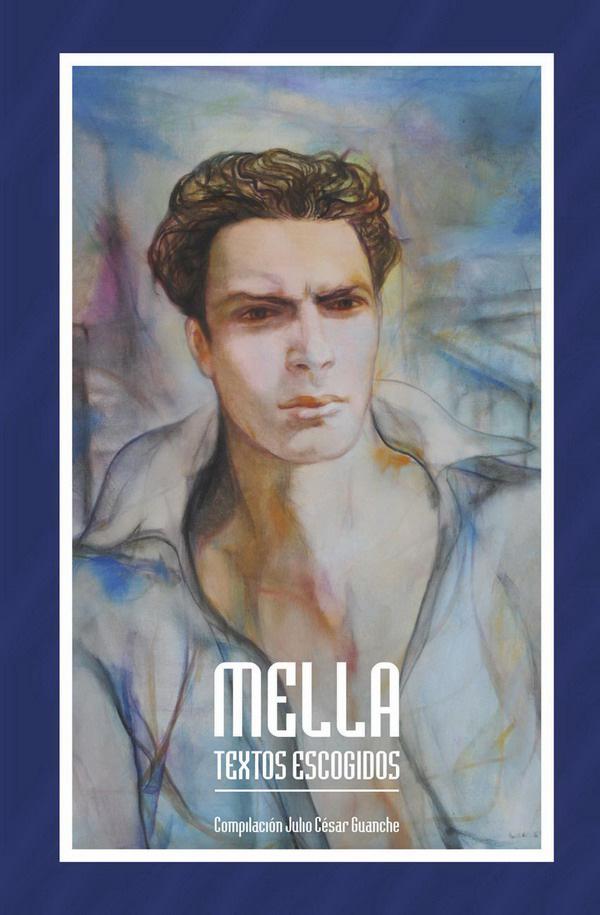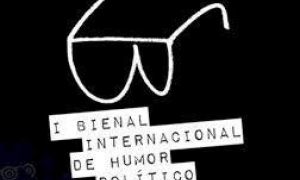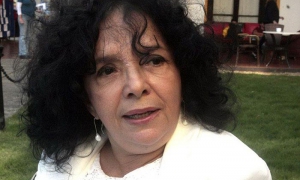What is he attempting? To make us believe that the human being is still
human… You know the latitude afforded the word adventurer. May it last.
(Juan Gelman's appeal to Víctor Casaus)

While the verses of the great Argentine Juan Gelman opening this commentary refer to the poetry of Víctor Casaus, the fact is that the same passion, the same sense of adventure that animates his literature can be found in the Cultural Center he has led for more than two decades, the Pablo de la Torriente Brau.
Installed in a small space at 63 Muralla Street, one of the best known in Havana's central historic district, the Pablo Center, as it is affectionately known, brings together diverse languages and ways of doing in an untiring cultural effort.
What has always characterized this work, since its very beginning, is the study, investigation, and safeguarding of the papers of Pablo Torriente Brau, one
of the greatest exponents of Cuban literature in the 20th century, alongside the numerous art forms the Center would later incorporate - new trova, graphic design, digital art, testimonial literature.
It is no surprise that the Center is so multi-faceted. We can see the hand of Víctor Casaus (La Habana, 1944). Literature: (poetry collections: De un tiempo a esta parte, Amar sin papeles, El libro de María; essays: Defensa del testimonio; stories: Sobre la marcha; testimonials: Pablo: con el filo de la hoja; and a reference book: Girón en la memoria). And film: Que levante la mano la guitarra; Vamos a caminar por Casa.
The motivation for a dialogue with the Center's director, this time, comes from the proximity of Cuba's 2018 International Book Fair, although, as usual, the conversation flowed farther afield.
Let's first talk about the books…
Over almost two decades, our La Memoria house been able to preserve through its catalogue the memory of the island and its inhabitants. We have more than 80 titles published. The collection with which it began was
Palabras de Pablo. This year, in the Casa del Alba, we will present the titles Barcos de papel, by Carlos Lechuga, Hungary 1956: Historia de una insurrección, by Fernando Barral; El tiempo que nos tocó vivir, by Jorge C. Oliva and Julio Antonio Mella; and Textos escogidos, a compilation of Julio César Guanche's work. To take place at the Martí Studies Center is the launching of La Habana de Pablo, by Leonardo Depestre; and in the Nicolás Guillén Hall at the San Carlos de la Cabaña Fortress, the tenth edition of Silvio, que levante la mano la guitarra, which he wrote with Luis Rogelio Nogueras; and a tribute to Juan Padrón and his Elpidio Valdés books: Los inicios y Verdugos. Lastly, we will have a special launch for Sharing dreams/ Compartiendo sueños. Memorias, a compilation by Xenia Reloba that brings together graphic work by Cuban and U.S. in the project.
The Pablo Center is made of challenges. What can we expect this year?
We will continue concretizing the 2018 editorial plan, another eight titles, outstanding among which is the reissue of Aventuras, venturas y desventuras de un mambí, by Raúl Roa, with a prologue by Raúl Roa Kourí. We are also celebrating two decades of the "A guitarra limpia" events, born in November of 1998, with the unforgettable concert "Immediate future" by trovador Santiago Feliú. Over the years the Center has held more than 120 concerts with male and female artists from all tendencies and generations of Cuban new trova. More than 60 CDs have been produced with individual concerts and 16 anthologies of the events. More than ten of the notebooks
"Memoria" have been dedicated to collecting information about this space at the end of every year, and two volumes of the anthology Memorias de A guitarra limpia, compiled by editor Xenia Reloba, which has become a sort of bible of Cuban new trova.
You always have a presence in other countries…
During the first part of the year, the Center will be present in commemorations of the 70th anniversary of the death of the great poet Miguel Hernández (El rayo que no cesa; Nanas de la cebolla) in Alicante and Salamanca, Spain, where the exposition Vientos del pueblo will be exhibited and my documentary Con Miguel Hernández en Orihuela, that I made with ICAIC in 1976. In April, we will participate in the Buenos Aires Book Fair, and in the second part of the year we'll be at the book fair in Mendoza, Argentina. Also in several Argentine provinces, we'll do the ninth edition of the tour Nuestra voz para vos, that includes new trova, graphic design, audiovisual and editorial productions, accompanied by of Cuban artists.
Do you have some special news for our publication?
Yes. This first part of the year, work will begin on repair of the building's interior, incorporating spaces that were occupied by the Poetry House, an institution affiliated with the City Historian's Office, that has been our neighbor since the Center's founding.
Within this plan, contemplated is the installation of a small library downstairs and an exposition space, the restoration of the historic patio of the snakewood trees, and the creation of a sound studio where our engineer Jaime Canfux, a founder of the Center, will have greater and better possibilities to give continuity to his excellent creative work, with which he has won two Cubadisco Prizes in the category of live recording, in addition to the immense part that is his of the Special Prize granted by Cubadisco for the 15 anthologies of "A guitarra limpia" performances produced over the years.
Is it possible to define the Center?
The beginning was Pablo and later, to the degree that resources and dreams allowed, and demanded, we opened other areas of culture work, uniting - in their apparent difference - the constant, resounding presence of memory, expressed through new Cuban trova, digital art, testimonial literature, graphic design, audiovisual creation, publications, and digital tools, which are indispensable today.
To paraphrase the poet Juan Gelman: May the Pablo Center's passion for cultural adventure last, with its sights set, as always, on preserving memory.
THE LIFE AND WORKS OF PABLO DE LA TORRIENTE BRAU
Made for my eyes / made to see extraordinary things / and my typewriter to tell them. / And that is all
This is how Pablo de la Torriente Brau (San Juan de Puerto Rico, 1901-Majadahonda, Spain, 1936) explained his work in journalism. He would later become one the greatest exponent of Cuban literature in the 20th century. His reporting would be the antecedent to his extraordinary testimonial literature.
He published his first book of stories, Batey, in 1930. A year after being released from Havana's Castillo del Príncipe prison, he wrote a series of articles entitled "105 days imprisoned." He would return to prison again, this time sent to the Presidio Modelo on the Isle of Pines, and from this experience emerged "La isla de los 500 asesinatos," a series of 13 articles that would later serve as the foundation of his book on the infamous prison.
In May of 1933 he went into exile in New York, and from there continued to struggle against the dictatorship of Gerardo Machado, who was finally overthrown August 12 that year. Returning to Cuba, he published "Tierra o Sangre," a series of reports denouncing abuses committed against Cuba's campesinos.
He traveled to Spain to aid the Republic in 1936, and on November 11 was named commissioner of war and a member of the General Staff of the 109th Battalion of the 7th Division. The following week he arrived in Madrid, and on December 17 had an encounter with the poet Miguel Hernández. On the 17th, he received orders to march to Majadahonda, where he was killed by a shot to the chest December 19th. Dying for the Republic, his cadaver was retrieved by a retreating Cuban, but never recovered.
Miguel Hernández dedicated to him the eulogy Elegía segunda (a Pablo de la Torriente, comisario político).
The Cultural Center that bears Pablo's name has a documental archive, the foundation of which is a donation made by his sisters Zoe and Ruth, in addition to texts and images that academics have gathered from his body of work during research projects conducted in Cuba, the United States, Puerto Rico and Spain.
His vast written work has been compiled in the following titles published by the Pablo Center: Cuentos Completos; Cartas y crónicas de España; Testimonios y reportajes; Arriba muchachos; Narrativa and Cartas cruzadas.






